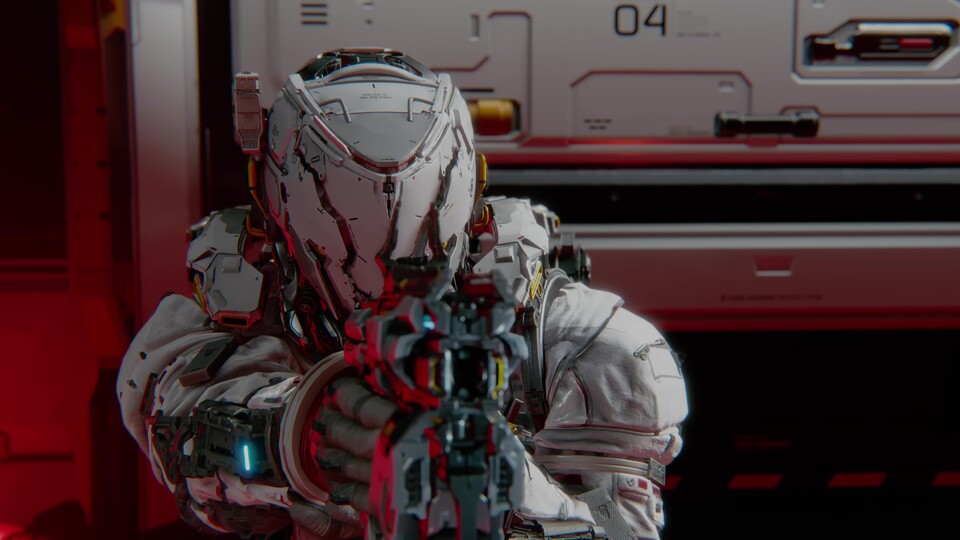At the NVIDIA showcase at Gamescom I finally got my hands on Pragmata, Capcom’s long-awaited new sci-fi IP. For a game that seemed to vanish from the radar for a while, sitting down with a controller instantly reassured me that this wasn’t a forgotten projec but it’s a bold, unusual experiment that could grow into something special instead.
The demo began with mystery. I woke up in a sterile, space-bound environment where gravity felt off and perspective played tricks on me. Within minutes I was joined by Diana, the mysterious girl who has been at the heart of every trailer so far. She isn’t just a passive companion, she’s an active part of the gameplay loop. In fact, she’s the key mechanic. That’s the first thing that reasurred me this is going to be a good game, we know that companions can be hit or miss in a lot of games but here Diana really plays a crucial role in the gameplay loop.
Combat blends third-person shooting with Diana’s hacking abilities, and the trick is that both systems run simultaneously. As I aimed and fired, I could also command her to infiltrate enemies. If her hack landed and I timed my own attacks correctly, damage output spiked dramatically. At first it felt like patting my head and rubbing my stomach at the same time, but after a few encounters I started to sense the rhythm. When it clicks, it’s satisfying in a way most shooters don’t manage, because it feels collaborative, you and Diana are performing in sync.
Hacking itself played out as a short puzzle on a digital grid. I had to guide a signal through shifting gates, always under time pressure. Later in the demo, I unlocked upgrades that made this process more layered: modifiers that rewarded precision with bonus damage, or extra pathways that turned the hack into a mini-strategy challenge. It wasn’t just filler; it directly fed back into combat intensity.
The structure of the demo was classic Capcom: a corridor of learning, small encounters that escalated tension, a puzzle to rewire systems, and finally a boss fight that demanded mastery of the shooting-hacking combo. That boss fight was where everything came together, dodging heavy attacks, lining up shots, and timing Diana’s hacks to land the decisive blows. It wasn’t easy, but it was addictive.
What struck me most was how fresh it all felt. Capcom is no stranger to action, but Pragmata leans into a different texture; more experimental, more like an RPG hybrid than a pure shooter. There’s a sense of learning curve built into its DNA, and I enjoyed that. It reminded me faintly of those odd, ambitious GameCube-era projects where Capcom wasn’t afraid to take risks.
Visually, playing on NVIDIA’s setup was stunning. The space station interiors glowed with sharp reflections, neon accents, and weightless detail that made me feel genuinely adrift. Diana herself had a striking presence, her animations lending warmth to an otherwise sterile, hostile world. Even though this was just a vertical slice, the technical polish and atmosphere gave me confidence that Capcom is treating Pragmata seriously.
Walking away after twenty minutes, I wasn’t just relieved that Pragmata is real, I was excited. The gunplay is tight, the hacking mechanic is clever and rewarding, and the partnership with Diana feels like the soul of the game. It’s still mysterious, still shrouded in unanswered questions, but this hands-on convinced me that Capcom has something here worth waiting for.



